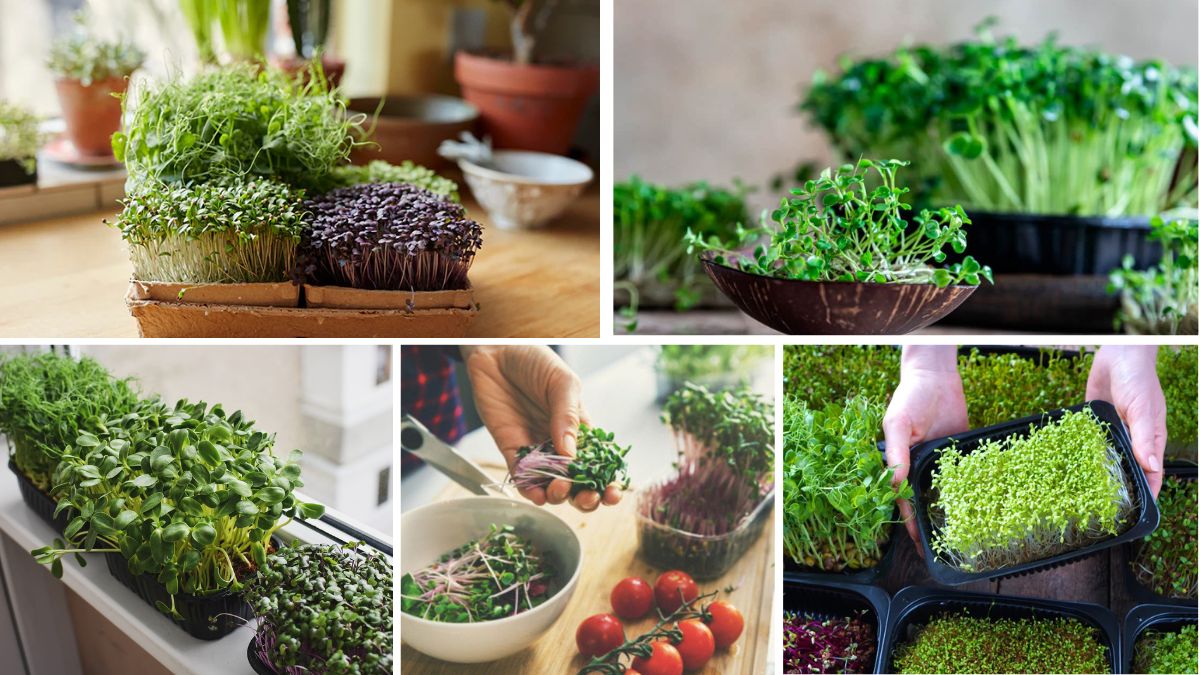Fresh, nutrient-packed, and bursting with flavor — microgreens have become a health sensation in home gardening. These young seedlings of vegetables and herbs are harvested just a week or two after germination, yet they pack up to 40 times more nutrients than their mature counterparts. When grown indoors, microgreens are free from harmful pesticides, available year-round, and fresher than anything you could buy at the store. Beyond their culinary appeal, cultivating microgreens at home brings remarkable health advantages for your body and mind.
In this guide, we’ll explore the top health benefits of growing your own microgreens indoors and why they’re an easy, rewarding addition to your daily diet.
1. Nutrient-Dense Superfoods for Daily Energy

Microgreens are miniature nutritional powerhouses. According to USDA studies, they can contain up to 4–40 times more vitamins, minerals, and antioxidants compared to fully grown vegetables. Varieties like broccoli microgreens are loaded with sulforaphane, a compound linked to cancer prevention. Sunflower shoots provide plant-based protein, while red cabbage microgreens are rich in vitamin C and anthocyanins for immune support.
When you grow them indoors, you’re harvesting at peak freshness, meaning no nutrient loss from long transportation or storage. A handful of freshly cut microgreens in your smoothie, salad, or sandwich can significantly boost your energy levels, support cell repair, and keep your body functioning optimally.
2. Strengthened Immune System
A healthy immune system is your body’s best defense against seasonal illnesses and chronic diseases. Microgreens like radish, kale, and mustard are naturally rich in vitamins A, C, and E, along with powerful antioxidants that help combat oxidative stress.
Indoor-grown microgreens also avoid exposure to outdoor pollutants and pests, ensuring a cleaner, safer crop. Regularly consuming these fresh greens can enhance white blood cell production, improve immune response, and shorten recovery time from colds and infections. Because you can grow them year-round indoors, you’ll have a consistent supply to keep your immune system strong in every season.
3. Improved Heart Health
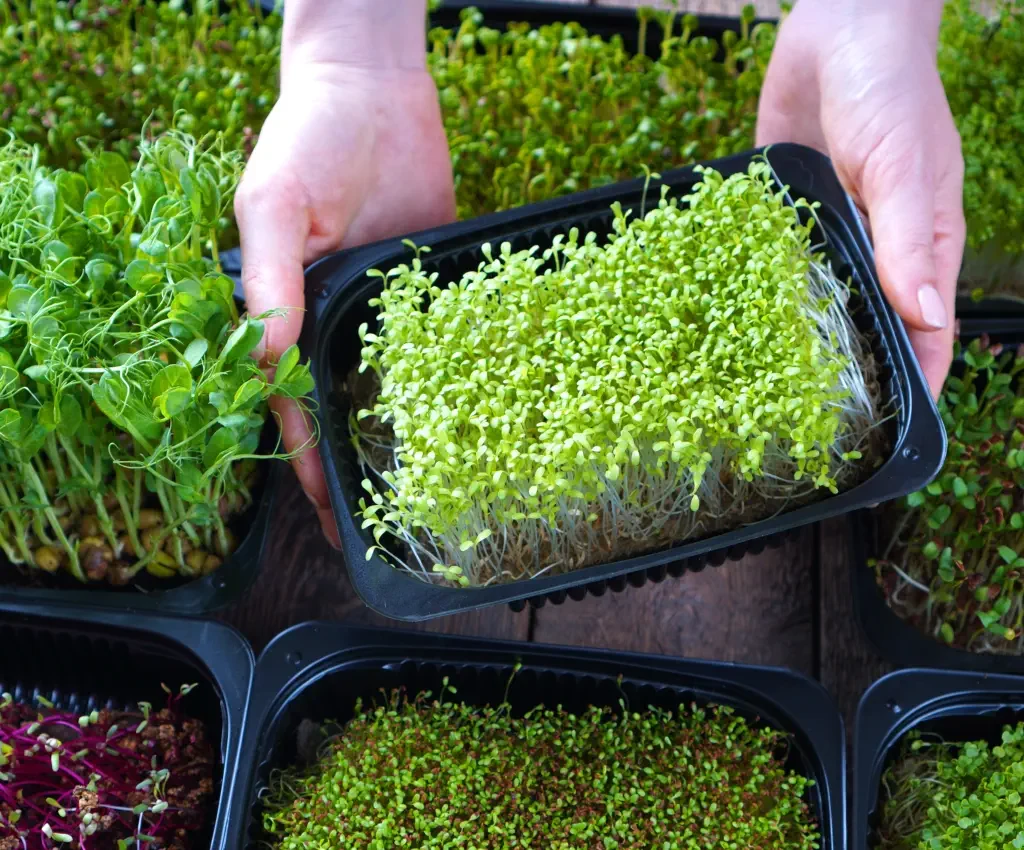
Heart disease remains one of the leading global health concerns, but diet plays a huge role in prevention. Microgreens — particularly red cabbage, beet, and amaranth varieties — are rich in polyphenols, which help reduce inflammation and improve blood vessel function.
Studies show that red cabbage microgreens can lower LDL (bad) cholesterol and triglycerides while improving HDL (good) cholesterol levels. They’re also abundant in potassium, which helps regulate blood pressure. Growing them indoors ensures you’re getting a pesticide-free, nutrient-rich source of heart-healthy greens without worrying about chemical residues.
4. Enhanced Digestive Health
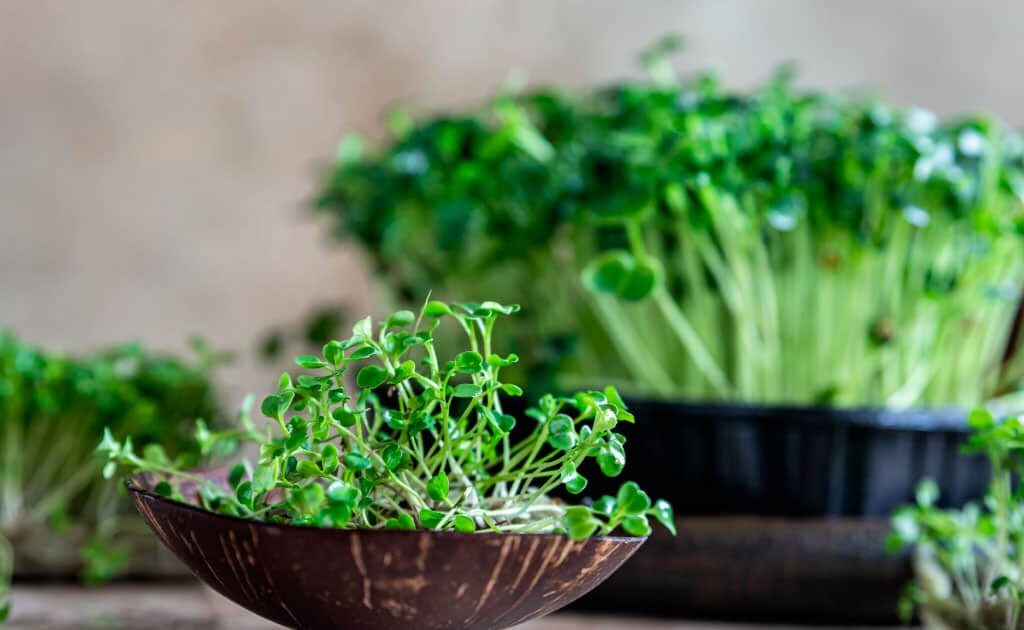
A happy gut is essential for overall well-being, and microgreens are excellent for digestive health. They are high in dietary fiber, which supports healthy bowel movements and feeds beneficial gut bacteria. Certain microgreens like fennel, basil, and cilantro also have natural digestive-aiding properties, helping reduce bloating and discomfort.
When grown indoors, microgreens are harvested at their tender stage, making them easier to chew and digest — especially for people with sensitive stomachs. By adding a variety of microgreens to your diet, you’re also diversifying your gut microbiome, which supports better nutrient absorption and a stronger immune system.
5. Natural Detoxification Support
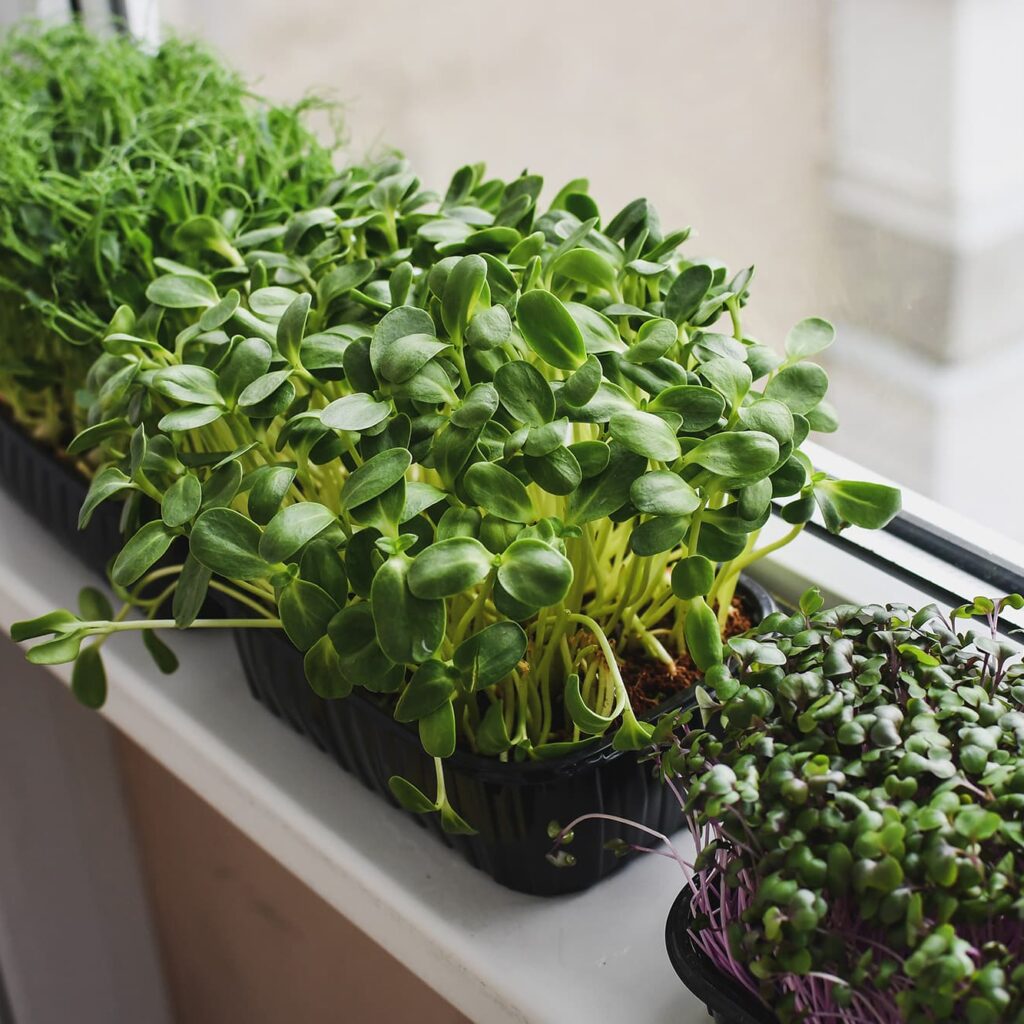
Your body’s liver and kidneys work hard to filter toxins, but modern diets and environmental factors can overwhelm these systems. Microgreens like cilantro, wheatgrass, and broccoli are known for their detoxifying compounds that bind to heavy metals and help flush them from the body.
Growing these detox-friendly greens indoors ensures they’re grown in clean, controlled conditions, avoiding outdoor pollutants or contaminated soil. Regular consumption can help reduce toxin buildup, support liver health, and leave you feeling lighter and more energized.
6. Blood Sugar Regulation
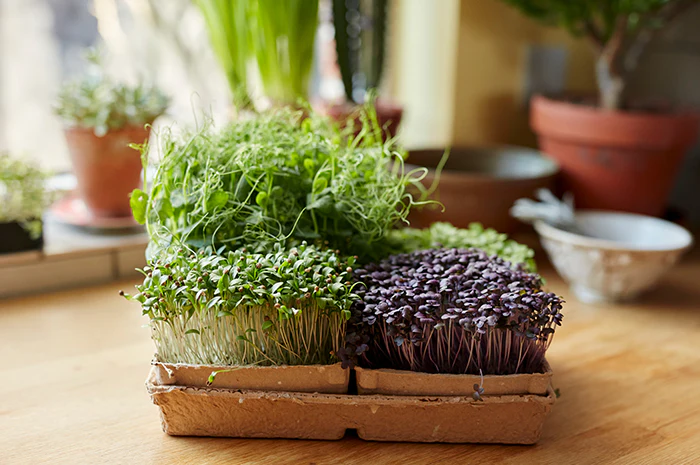
For those managing diabetes or blood sugar fluctuations, microgreens can be a valuable dietary addition. Research shows that fenugreek, broccoli, and red cabbage microgreens may help improve insulin sensitivity and regulate glucose levels.
The concentrated phytonutrients in microgreens slow the absorption of sugars into the bloodstream, preventing sudden spikes and crashes. Indoor growing means you can keep a steady supply on hand, making it easier to incorporate them into daily meals for consistent blood sugar management.
7. Better Mental Health and Stress Reduction
Nutrition isn’t just about physical health — it deeply impacts your mental well-being. Microgreens such as sunflower, pea shoots, and basil are rich in B vitamins, magnesium, and tryptophan, nutrients essential for healthy brain function and mood regulation.
The process of growing microgreens indoors also offers a therapeutic benefit. Gardening, even on a small scale, is known to reduce stress, improve focus, and boost feelings of accomplishment. Watching seeds sprout into vibrant greens in just a week can be incredibly rewarding, making microgreen cultivation a form of self-care for the mind.
8. Reduced Risk of Nutrient Deficiency
Many people don’t meet the recommended daily intake of vegetables, leading to subtle nutrient deficiencies over time. Growing microgreens indoors eliminates barriers like lack of space, seasonal limitations, or poor produce quality.
Because they’re so concentrated in nutrients, even a small handful of microgreens can help bridge dietary gaps. For example, kale microgreens can boost vitamin K intake for bone health, while radish microgreens provide folate for cell repair.
9. Fresh, Pesticide-Free Produce Year-Round
Commercially grown produce often contains pesticide residues and may lose nutrients during transport. By growing microgreens indoors, you control the growing medium, water, and environment, resulting in pure, chemical-free food.
Since microgreens take only 7–14 days to mature, you can harvest and replant continuously, ensuring fresh greens for your plate every week — no matter the weather outside.
10. Encourages Healthier Eating Habits
Having a tray of vibrant greens ready to harvest makes it easier to eat more fresh produce daily. Microgreens are visually appealing and flavorful, making them perfect for topping soups, sandwiches, wraps, and even omelets.
When you’ve grown them yourself, there’s a sense of pride that encourages you to eat more mindfully and make healthier choices overall. This simple habit can positively influence your entire diet.
Conclusion
Growing microgreens indoors is far more than a gardening trend — it’s a practical, affordable way to improve your health every day. These tiny greens are nutritional powerhouses that support your immune system, heart, digestion, and mental well-being while helping detoxify your body and regulate blood sugar.
By cultivating them at home, you gain access to fresh, pesticide-free, nutrient-rich produce year-round, all from the comfort of your kitchen or windowsill. Whether you’re seeking better nutrition, stress relief, or simply a fun and rewarding hobby, microgreens deliver powerful benefits in a small package.
Your health is in your hands — or rather, in your trays of fresh, green goodness.
